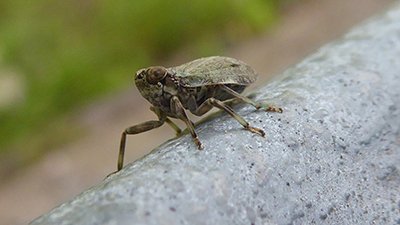
Them Bones, Them Thigh Bones
PhysOrg: “Study of 90 Animals’ Thigh Bones Reveals How They Can Efficiently Carry Loads” What amazing structure is strong yet lightweight? And just as importantly, who was the designer?
Researchers from Imperial College London and the Royal Veterinary College have studied the thigh bones of more than ninety animal species to help learn why bones have such strength despite being relatively lightweight. Among the team’s discoveries were how “remarkable geometry” inside the thigh bone helps support payloads no matter what the size of the animal.
The team began by gathering femur bones held in the collections of British museums and zoos, then used a technique known as X-ray microtomography to scan the bones. Next, computers processed the scans and created more than two hundred virtual models of the bones’ inner structure. Finally, the scientists used a computer program called BoneJ to carefully examine the various types of “struts” that comprise the bone, and in particular interlinking lattices of tiny bone struts called trabeculae.
Even the smallest animals—such as the three-gram Etruscan shrew—had trabeculae, which help them support heavy loads.
Amazingly, although the exact thickness and number of trabeculae varied based on the size of the animal, even the smallest animals—such as the three-gram Etruscan shrew—had trabeculae, which help them support heavy loads. Lead author Michael Doube, a veterinary surgeon and bioengineer at Imperial College London, explained, “Our study is helping us to see how the remarkable geometry of trabeculae supports loads in all creatures, no matter how big or small they are.”
The team hopes the research will help in the development of new materials inspired by trabeculae, materials that are lighter yet stronger and can be used in such areas as the most critical parts of car chassis or aircraft fuselages. And as human designers understand and look to mimic yet another of nature’s fascinating designs, we are reminded of the Designer whose handiwork is seen throughout nature: the Creator of Genesis 1, not blind evolution.
For more information:
Remember, if you see a news story that might merit some attention, let us know about it! (Note: if the story originates from the Associated Press, Fox News, MSNBC, the New York Times, or another major national media outlet, we will most likely have already heard about it.) And thanks to all of our readers who have submitted great news tips to us.
(Please note that links will take you directly to the source. Answers in Genesis is not responsible for content on the websites to which we refer. For more information, please see our Privacy Policy.)
Recommended Resources

Answers in Genesis is an apologetics ministry, dedicated to helping Christians defend their faith and proclaim the good news of Jesus Christ.
- Customer Service 800.778.3390
- Available Monday–Friday | 9 AM–5 PM ET
- © 2025 Answers in Genesis





